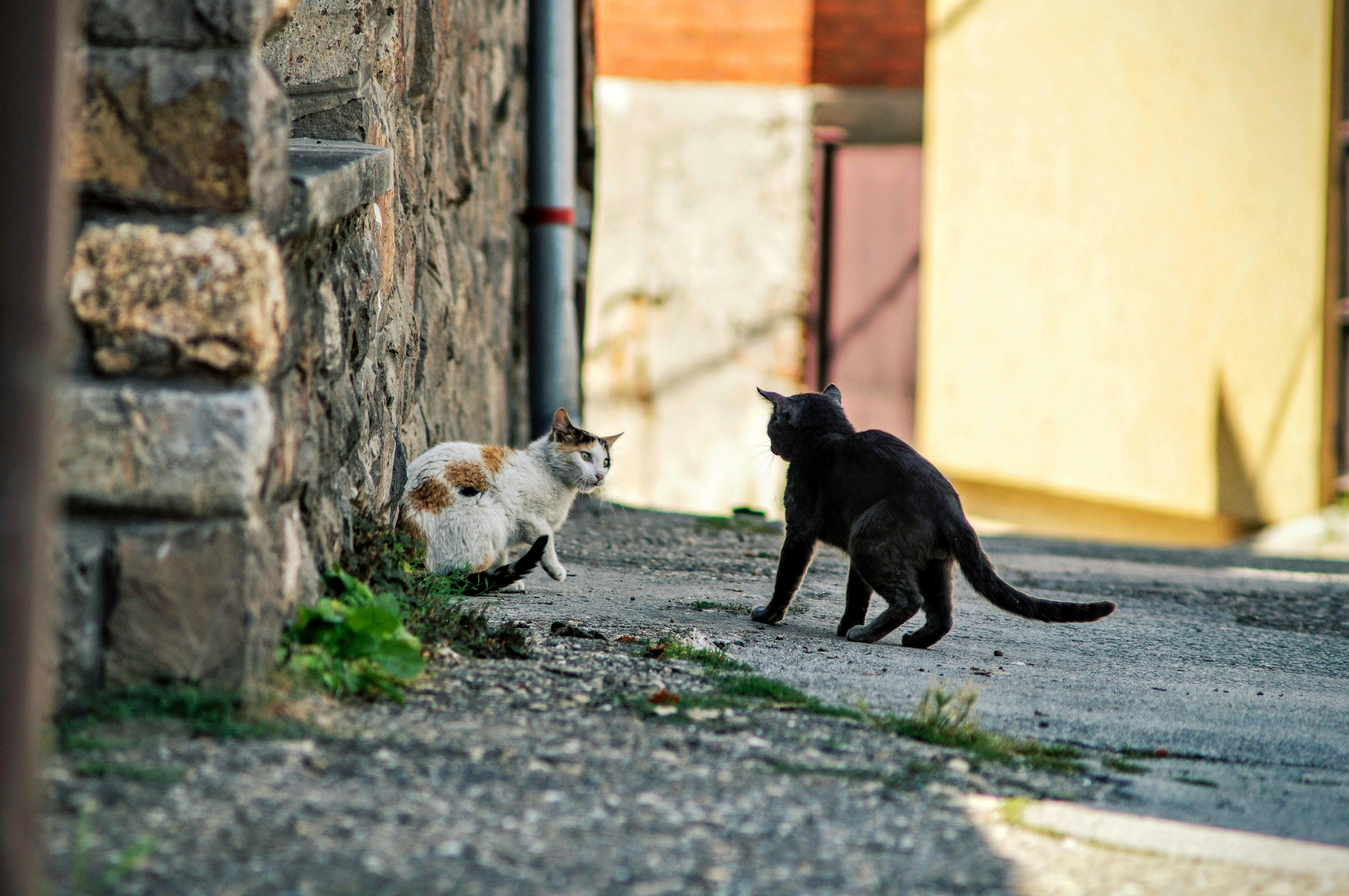- Home
- The Daily Wag!
- Behavior
- Why Do Cats Fight?

Common
Normal
As a cat parent, there are few things worse than seeing your furry children fight. One minute everyone’s minding their own business, and the next minute they’re hissing and swatting at each other. The bad news is, there’s no way of knowing in advance how well a cat will get along with another feline, if at all. The good news is, cats who don’t like each other can often learn to live in the same household with minimal conflict with some help from their human family. So why do cats fight?
Feline aggression comes in different forms, but they all typically stem from fear and mistrust. Common types of aggressive behaviors between cats include territorial aggression, defensive aggression, intermale aggression, and redirected aggression.
Cats are very territorial creatures who won’t hesitate to start a fight when they feel that their territory or survival is threatened; they will chase, ambush, swat, and/or hiss at an intruder. Interestingly, it’s not uncommon for a cat to be hostile toward one feline housemate but friendly toward another. Territorial aggression can be caused by a new cat joining the household, or when a cat encounters neighborhood cats outside.
A cat who finds themselves in an unwanted situation that they cannot escape will also become aggressive in order to protect themselves. The defensively aggressive cat will flatten their ears against their head, crouch with their legs pulled in under their body, tuck their tail, and/or slightly roll over to one side to expose their claws. They’re basically warning the perceived threat to back off or else!
Intermale aggression often occurs when intact adult males fight over a female. Male cats will posture, stare, stalk, yowl, and/or howl, but this doesn’t always lead to a fight if one of them walks away. If a physical altercation does occur, the involved parties usually emerge without any serious injuries; however, you should still check for puncture wounds to be sure.
In redirected aggression, a cat directs their aggression toward another cat who had nothing to do with the event that initially threatened or scared them. A common example is when two house cats are sitting on a windowsill and an outdoor cat appears. Feeling threatened, but unable to respond to the outdoor cat, one of the house cats may attack the other cat sitting beside them.
Need advice about your pet's health?
Get answers fast from a veterinary professional 24/7 in the Wag! App.
Get Vet ChatFeline housemates who can’t seem to get along well should not be allowed to continue fighting. Because the social hierarchy of cats is loose and not as defined as that of canines, it’s very unlikely that they’ll resolve any conflicts on their own—you as the cat parent need to step in. Fortunately, most cases of aggression between cats can be resolved or even prevented from happening in the first place. Here’s what you can do.
There are many benefits to spaying and neutering your furry friends, and one of them is that it greatly reduces aggression. Just one intact cat can affect your entire clowder, so make sure to have everyone spayed or neutered. Furthermore, see to it that there are adequate resources to go around. Providing enough toys, litter boxes, scratching posts, food and water bowls, resting spaces, and attention to each cat helps prevent feelings of mistrust and competition.
You can also “train” your cats to like each other. Give your cat a treat or play with them when the other cat is around to create positive associations. Keep in mind that this won’t happen overnight; patience and consistency are a must. Speaking of lengthy processes, introduce cats slowly whenever there is a new addition to the family. This may take days, weeks, or months, but always follow the pace of the cat who is showing the most fear.
To break up fights, don’t try to pull the cats apart. Instead, make a loud noise or throw a blanket over them. Don’t punish the involved parties either, as doing so can make the problem worse.
Boredom can sometimes be mistaken for aggression. If a cat is chasing another cat, it doesn’t always mean that they’re trying to pick a fight, especially if the former is younger and more active. It’s more likely that their daily exercise needs are not being met. Yet, despite being notorious nappers, cats require physical activity too!
If your feline friend has energy to burn, play with them every day. Not only does play provide exercise, but it also helps reduce stress and boost confidence. Moreover, it’ll get them to leave the less active cat alone.
Cats fight for various reasons, but most issues can be fixed with human intervention. If you need additional help, don’t hesitate to reach out to a cat behavior specialist.
Got more questions about your cat's behavior? Chat with a veterinary expert to get answers about your pet’s quirks, health and more!
Written by Aurus Sy
Veterinary reviewed by:
Published: 09/21/2021, edited: 08/17/2023
More articles by Aurus Sy
